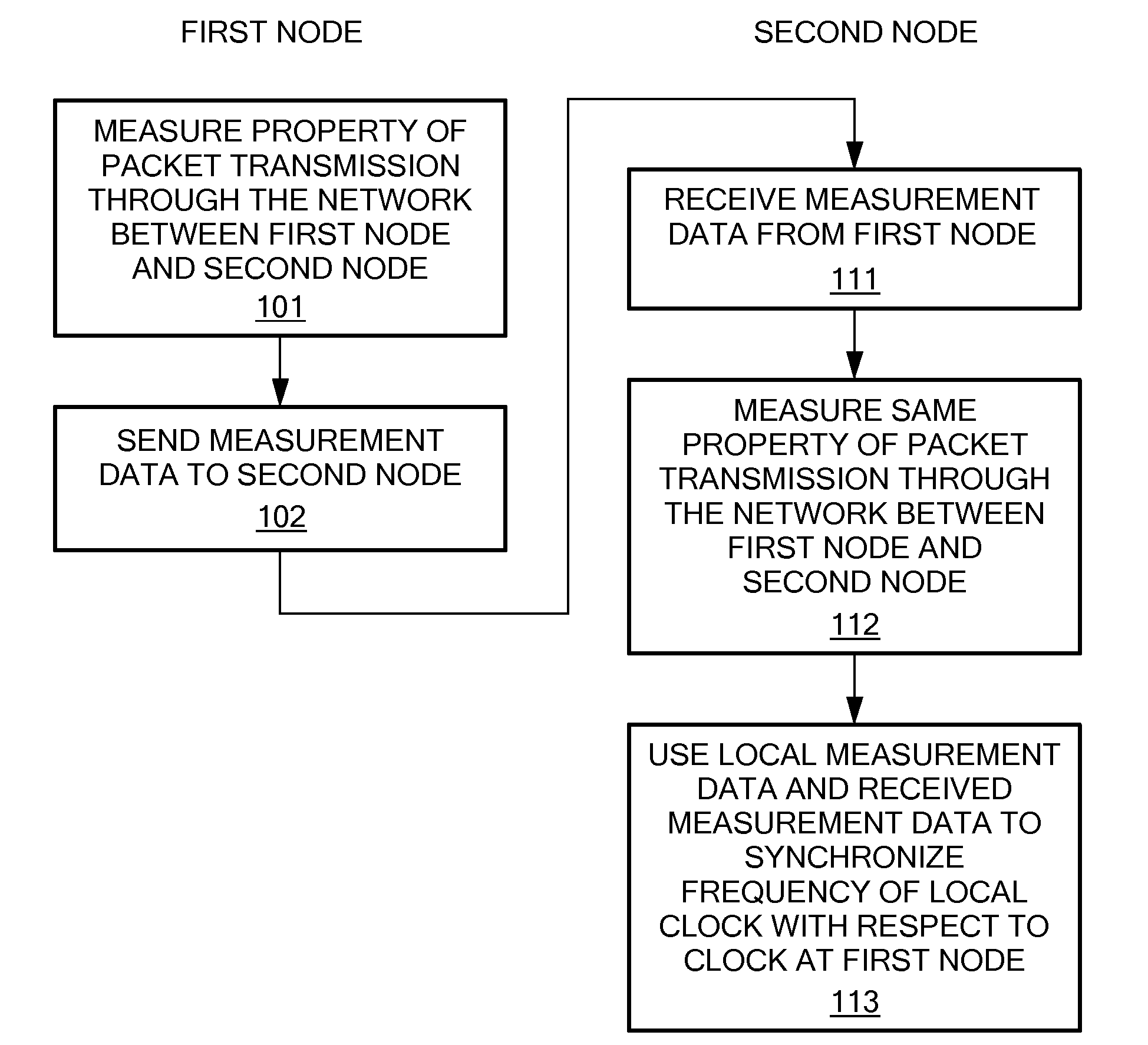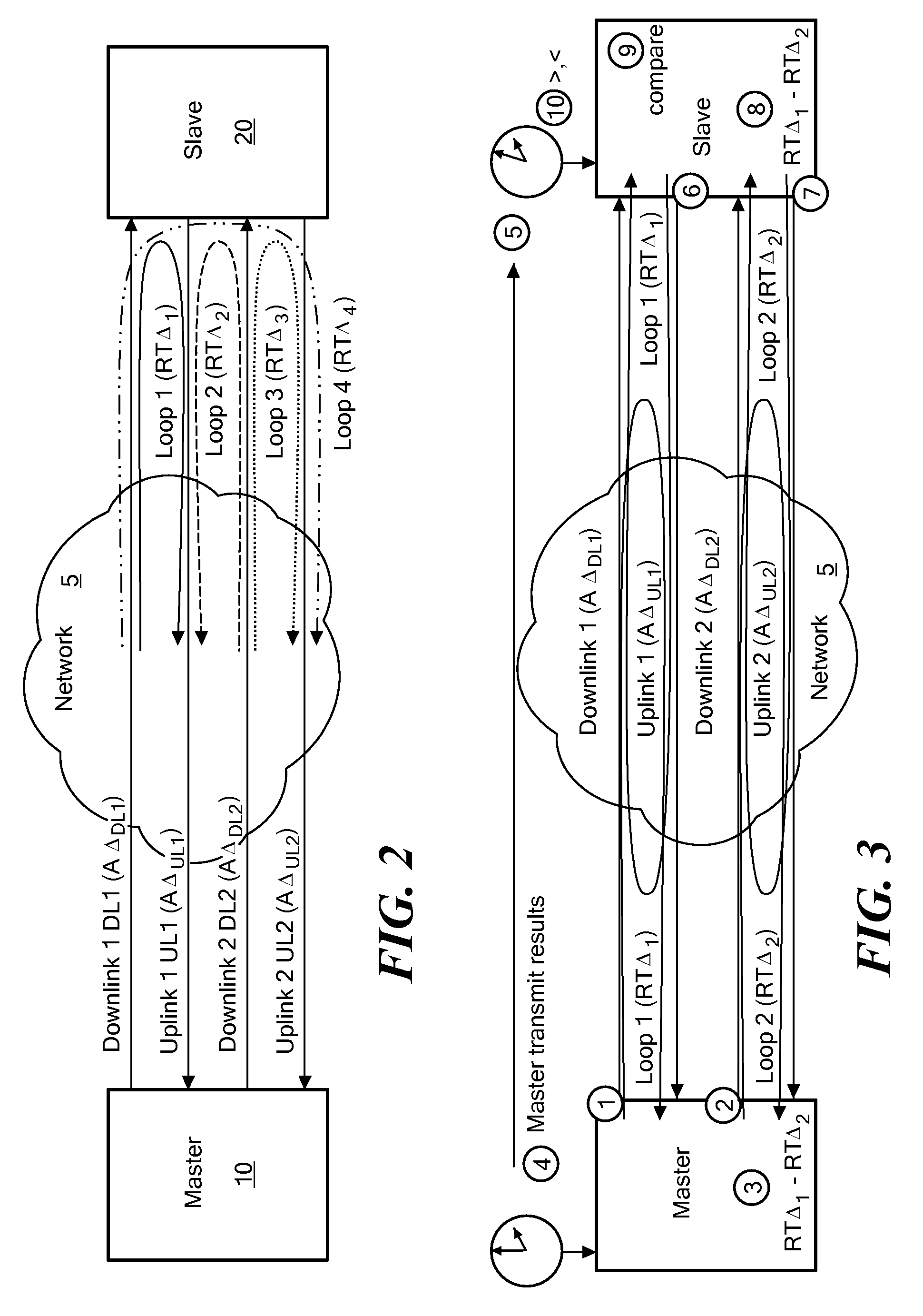Synchronization of network nodes
a network node and synchronization technology, applied in the field of synchronizing clocks or references, can solve the problems of prohibitively high cost of many applications, add significantly to the cost of low-end applications, and high installation cost of antennas for these satellite signals, and achieve less accurate, accurate correction, and higher accuracy.
- Summary
- Abstract
- Description
- Claims
- Application Information
AI Technical Summary
Benefits of technology
Problems solved by technology
Method used
Image
Examples
first embodiment
[0044]the method for measuring roundtrip transfer delay that is generally applicable to disjoint routes as well as routes with one direction in common will now be described with reference to FIG. 3.
Steps Performed at Master Node, 10
[0045](1) measure roundtrip transfer delay for a first route (e.g. Loop 1);[0046](2) measure roundtrip transfer delay for a second route (e.g. Loop 2, as defined in FIG. 3);[0047](3) determine difference value between the measurements obtained at step (1) and step (2);[0048](4) send the difference value calculated at step (3) to the slave node 20.
Steps Performed at Slave Node, 20[0049](5) receive difference value from Master node;[0050](6) measure roundtrip transfer delay for a first route (e.g. Loop 1);[0051](7) measure roundtrip transfer delay for a second route (e.g. Loop 2);[0052](8) determine difference value between the measurements obtained at step (6) and step (7);[0053](9) compare the difference calculated at step (8) and the difference value rec...
second embodiment
[0113]The second embodiment does not suffer at all from the effects of network oscillator drifts and much less to its variability. The preferred means of the slave measuring route downward transfer delay measurements can be effected with the same packets the master uses to measure route and inter-route roundtrip delays. This means that the network oscillator drifts and second order variability will be common to both the master and slave measurements of the downward direction. Furthermore the differences the master derives by using inter-route roundtrip measurements such as transfer delays, given the upward directions are by definition common measurements, any network oscillator drift is eliminated when the difference is calculated and any second order variability between packet arrivals from each respective downlink is tiny by comparison.
[0114]Finally, a balance is readily struck between the ppb differences of the master and slave clocks that are to be corrected, their drift during ...
PUM
 Login to View More
Login to View More Abstract
Description
Claims
Application Information
 Login to View More
Login to View More - R&D
- Intellectual Property
- Life Sciences
- Materials
- Tech Scout
- Unparalleled Data Quality
- Higher Quality Content
- 60% Fewer Hallucinations
Browse by: Latest US Patents, China's latest patents, Technical Efficacy Thesaurus, Application Domain, Technology Topic, Popular Technical Reports.
© 2025 PatSnap. All rights reserved.Legal|Privacy policy|Modern Slavery Act Transparency Statement|Sitemap|About US| Contact US: help@patsnap.com



